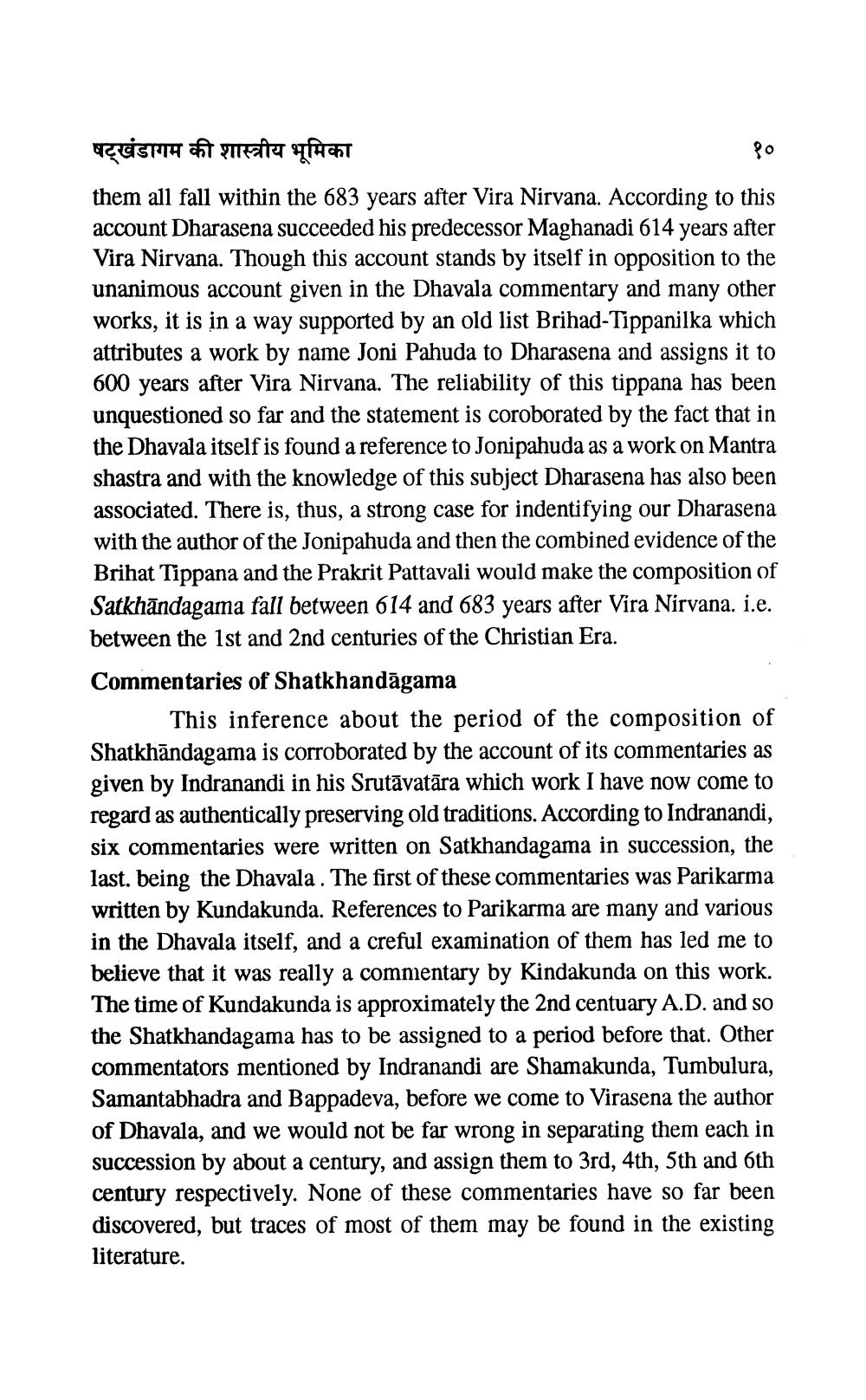________________
षट्खंडागम की शास्त्रीय भूमिका them all fall within the 683 years after Vira Nirvana. According to this account Dharasena succeeded his predecessor Maghanadi 614 years after Vira Nirvana. Though this account stands by itself in opposition to the unanimous account given in the Dhavala commentary and many other works, it is in a way supported by an old list Brihad-Tippanilka which attributes a work by name Joni Pahuda to Dharasena and assigns it to 600 years after Vira Nirvana. The reliability of this tippana has been unquestioned so far and the statement is coroborated by the fact that in the Dhavala itself is found a reference to Jonipahuda as a work on Mantra shastra and with the knowledge of this subject Dharasena has also been associated. There is, thus, a strong case for indentifying our Dharasena with the author of the Jonipahuda and then the combined evidence of the Brihat Tippana and the Prakrit Pattavali would make the composition of Satkhāndagama fall between 614 and 683 years after Vira Nirvana. i.e. between the 1st and 2nd centuries of the Christian Era. Commentaries of Shatkhandāgama
This inference about the period of the composition of Shatkhāndagama is corroborated by the account of its commentaries as given by Indranandi in his Srutāvatāra which work I have now come to regard as authentically preserving old traditions. According to Indranandi, six commentaries were written on Satkhandagama in succession, the last. being the Dhavala. The first of these commentaries was Parikarma written by Kundakunda. References to Parikarma are many and various in the Dhavala itself, and a creful examination of them has led me to believe that it was really a commentary by Kindakunda on this work. The time of Kundakunda is approximately the 2nd centuary A.D. and so the Shatkhandagama has to be assigned to a period before that. Other commentators mentioned by Indranandi are Shamakunda, Tumbulura, Samantabhadra and Bappadeva, before we come to Virasena the author of Dhavala, and we would not be far wrong in separating them each in succession by about a century, and assign them to 3rd, 4th, 5th and 6th century respectively. None of these commentaries have so far been discovered, but traces of most of them may be found in the existing literature.




